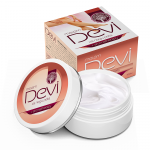(Salvia officinalis)
Over 3,000 plant species grow in the 16-kilometre long and some 360-metre deep Sićevo gorge, east of the southern Serbian city of Niš. The rugged and beautiful landscape of the Svrljig mountains is an ideal habitat for sage, otherwise a Mediterranean plant, which is a wild, autochthonous species here. Aware of its value, the locals organise Days of Sage every May, an event that gathers fans of this extremely medicinal plant. Sićevo gorge is the largest natural area covered in sage outside the Mediterranean. Sage has always grown in the Mediterranean belt and has been famous far and wide. The Chinese valued it so much that they would trade three crates of their tea for one crate of sage with Dutch merchants. According to many folk traditions, sage is synonymous with longevity and immortality.
Cur moriatur homo, cui salvia crescit in horto? Why would a man whose sage grows in the garden die? – says the famous verse of the mediaeval didactic poem Regimen Sanitatis Salernitanum, the Rule of Health from Salerno, where the first European mediaeval medical school, founded in the 9th century, was located. It gathered all previous knowledge, from Hippocrates, through Galen, Dioscordus to Arabic medicine. Salerno, which received the title of ‘the City of Hippocrates’, is surrounded by rugged terrain that is reminiscent of the area surrounding the Sićevo gorge, where sage grows in abundance.
SAVIOUR PLANT
The scientific name of the plant, salvia officinalis, means saviour. Among its many applications, it is also used to fumigate our living space. It disinfects the air, helps eradicate mould, mites and insects. In that capacity, it reached all American Indian tribes which burned it in rituals of “purification” for the body and energy.
It was believed that sage was a saviour at a time when the world was in the clutches of the plague, the Black Death. It was one of the ingredients in the famous tonic called the Vinegar of Four Thieves, also known as the Marseille medicine, which was believed to protect against the plague. Even today, a similar tonic is made in Provence, with the main ingredients being sage, lavender, thyme and rosemary. Where did the name “four thieves” come from? It was to do with a story about a group of thieves who used to rob the sick and the dead in Marseille and Toulouse during the plague epidemic. When they were caught, they offered to swap their secret recipe for freedom, as the recipe reportedly enabled them to come into close contact with the infected and not catch the disease.
The belief that sage protects against many diseases, including the plague, is confirmed by the fact that Charlemagne ordered all monasteries to grow it and use it extensively for healing. Today we know that these beliefs were completely founded. Modern medicine considers sage to be an excellent natural and ecological alternative to disinfectants.
There is a long list of healing properties that this plant has: anti-inflammatory, anti-bacterial, anti-fungal, antiseptic, astringent, anti-oxidant, expectorant, carminative, cholagogue, choleretic, emmenagogic, cicatricial… No wonder, as it has over 120 useful ingredients. Some of them are borneol, camphor, caryophyllene, pinene, as well as flavonoids, rosmarinic acid, luteolin-7-glucoside…. Recent discoveries show that sage has the power to inhibit mutagenesis: sage leaf tea reduces mutations in a wide range of pathogens, for example in Escherichia coli, and has a strong bactericidal effect against a number of bacteria, such as: Bacillus subtilis, Enterococcus faecalis, Listeria monocytogenes, Staphylococcus epidermidis, Aeromonashydrophila, Aeromonassobria, Klebsiella oxytoca, Klebsiella pneumonia, Pseudomonas morgani, Salmonella anatum, Salmonella enteritidis, Salmonella typhi, Shigellasonei…Today, when we are painfully aware of the fact that bacteria are increasingly resistant to modern antibiotic drugs, sage is even more important. By preventing bacterial and fungal infections, this medicinal plant – a natural antibiotic – successfully helps heal wounds, prevents complications, and is also effective for herpes. In addition to promoting healing, sage is also an excellent astringent – it stops bleeding quickly and effectively.
SAGE TEA
That is why it is not surprising that sage tea has always been used in our country for health and natural healing. Today, we know that sage has been proven to cure a range of diseases, from inflammation, infections, to Alzheimer’s disease and cancer. But what we most often use for it in our region is to treat sore throat, hoarseness, tonsillitis, pharyngitis… Sage really salves our throat, especially if we rinse it with a strong decoction. Research has confirmed it: sage brings significant relief of symptoms during the first two hours after the first use. Sage is also useful for gums when used as mouthwash, it helps with sores, infections and canker sores.
Sage contains an incredible number of minerals and vitamins, unsaturated fatty acids, coenzyme Q10, phytoestrogens, and its linalyl acetate is especially useful in inflammatory processes. Alongside the list of these useful ingredients, there is a long list of disorders that sage saves us from: decreased immunity, diabetes, high cholesterol, degenerative eye diseases, poor concentration and memory, depression, inflammation of the digestive organs, liver, kidneys, bile, urinary tract, respiratory mucosal irritations, menopausal hot flashes, rheumatism, weak bones, gingivitis and bleeding, bad breath, skin infections, dandruff, increased sweating, infertility, impotence, menstrual disorders, menstrual pain, hormonal imbalance and even labor pains.
However, such a powerful drug must also have its dark side. Side effects of this plant come from thujone, a ketone that can cause dizziness and nausea and therefore sage tea should not be taken for more than 15 days.
IT IS ESPECIALLY GOOD FOR THE SKIN
And when it comes to the skin, tannins in sage oil save us from acne, blackheads, oily skin, irritations, eczema and fungal diseases; its eucalyptol can alleviate blisters and diaper rash in babies. Salvigenin, a flavone that sage is rich in, cleanses the blood and helps flush out toxins, while its antioxidants, luteolin, selenium and apigenin protect the body from the harmful effects of free radicals. All this is reflected in the skin, which becomes cleaner, softer and healthier, looking rejuvenated and without wrinkles. Sage also strengthens the skin and makes it less sensitive; it can also lighten it and remove hyperpigmentation.
The most valuable effect of sage on the skin is anti-inflammatory, anti-bacterial and anti-fungal. That is why it is a real saviour when it comes to fungal feet and nail infections; as it effectively prevents sweating it also helps with unpleasant foot odour. It is for this reason that sage is part of the Devi foot care balm. As is the case with the Four Thieves tonic, the ingredients in the Devi balm for heel care – sage, rosemary, lavender, tea tree and cloves – ‘steal’ every opportunity that bacteria and fungi may have to get onto our soles, between the toes and around the nails. Along with them, quality oils of avocado, marigold, wheat germ, Chilean rose and cocoa butter do their best to make our feet soft, tender and look well-groomed. There is also Clear Skin Gel, for acne prone skin. From the rocky slopes around Salerno in Italy, to the Sićevo gorge in Serbia and medieval French monasteries, to the Devi falm – sage has been our ubiquitous loyal saviour for centuries.

